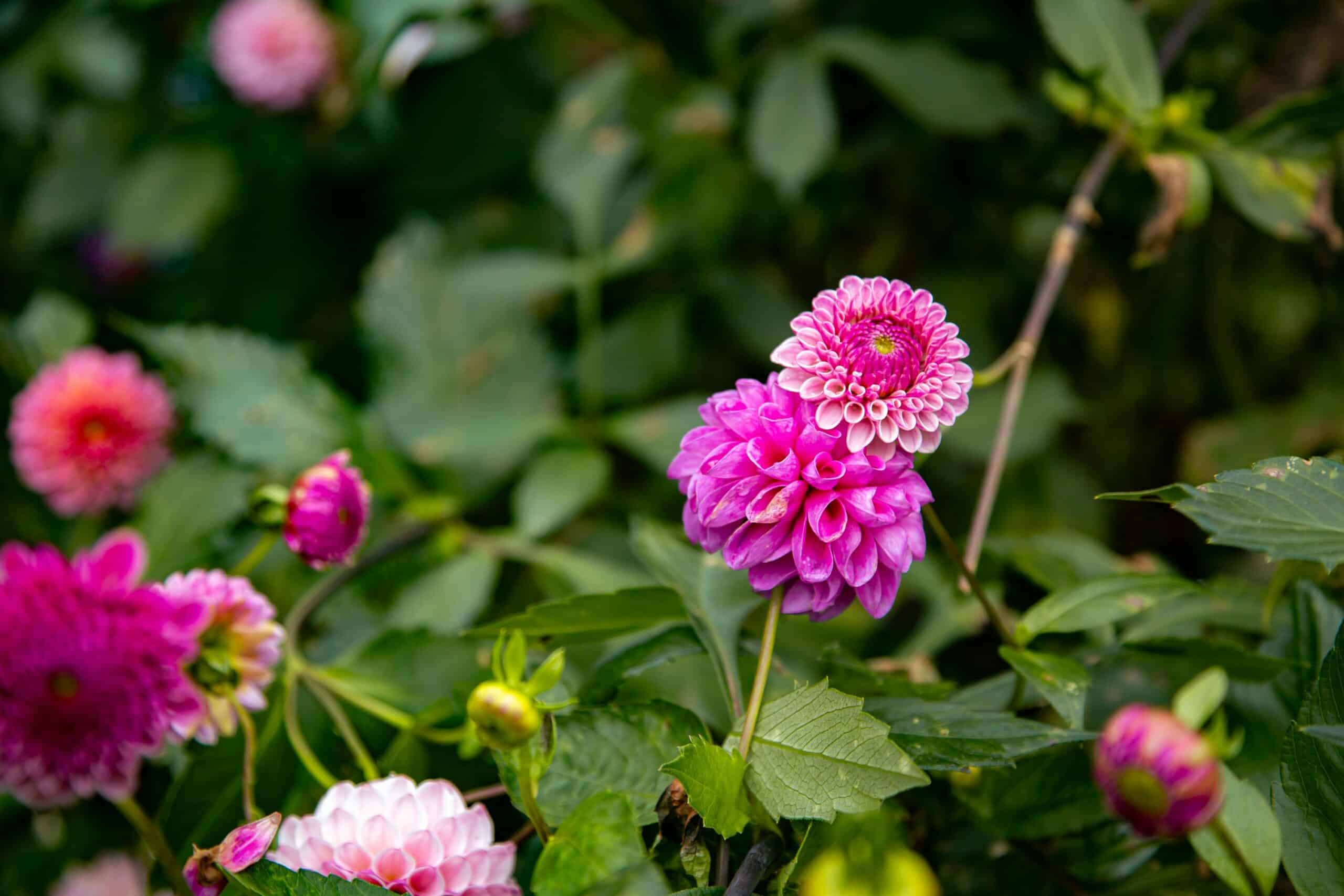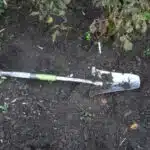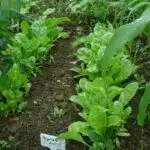Dahlias are some of the most beautiful and captivating flowers that can be found in gardens. They come in a wide variety of shapes, sizes, and colors, making them an excellent addition to any home landscape. Growing dahlias in pots is an excellent way to add color and interest to your garden without taking up too much space or requiring a lot of effort. In this article, we will explore the basics of growing dahlias in pots, from choosing the right pot size to providing adequate care for your plants. With just a few simple steps, you can have a beautiful blooming display of dahlias in no time!
As a specialist in botany and gardening, I know that when it comes to growing flowers, there is no one-size-fits-all approach. Every plant has its own particular needs when it comes to soil type, light requirements, environment, etc., and it’s important to understand these nuances before getting started. Thankfully, dahlias are fairly easy to grow in containers as long as you provide them with the right conditions.
Growing beautiful flowers not only adds beauty and interest to your home landscape but also serves as an act of service for others. By understanding how to properly grow dahlias in pots, you can provide yourself with an incredibly rewarding experience while also helping others enjoy their presence as well! Read on for some great tips on how to get started growing these spectacular blooms right away!
Choosing A Pot For Dahlias
When it comes to planting dahlias in pots, the first step is choosing a pot for these plants. While many people assume that any container will do, this is not the case. The size of the pot should be relative to the size of the plant, and it should also have adequate drainage holes. Additionally, if you are planning on planting multiple dahlias in one pot, make sure to choose a larger container with enough room for each plant’s root system.
In addition to size and drainage, there are also other factors to consider when selecting your containers. For instance, if you live in an area where temperatures drop significantly during the winter months, you may want to use a terracotta or clay pot because they insulate better than plastic or metal containers. On the other hand, if your climate is generally milder throughout the year and you want something more lightweight for convenience purposes, plastic or metal pots could work well too.
When deciding on a pot for your dahlia plants, it’s important to take into account all of these factors so that you can provide them with an optimal growing environment. With careful consideration and selection of a suitable container as well as preparation of both soil and potting mix prior to planting, your potted dahlias will be off to a great start!
Prepping The Pot And Soil For Planting
Once you’ve selected the right pot for your dahlia, it’s time to prepare the soil and get ready to plant. This is an important step in making sure that your dahlia will thrive in its new home.
First, you’ll want to make sure that the pot has plenty of drainage holes at the bottom. These are essential for keeping your dahlia roots from becoming waterlogged, which can lead to root rot or other problems. Additionally, be sure to give your pot a thorough cleaning before planting – this will help ensure that any diseases or pests are not transferred from one location to another.
Next, you’ll need to create a soil mixture for your new dahlia. A well-draining potting mix is ideal, as it will allow adequate moisture and oxygen levels for healthy growth and blooming. You may also choose to add some compost or fertilizer into the mix – just make sure not to overdo it! Doing so could result in too much nitrogen being released into the soil, leading to rapid leaf growth but few blooms.
With proper preparation and care of your potting mix and container, you’ll be giving your dahlias all they need for a successful growing experience. Now let’s move on to selecting the right variety of dahlia for your situation!
Selecting The Right Dahlia Variety
When selecting the right dahlia variety to grow in pots, it’s important to take into account factors such as climate, soil, and even personal preference. Dahlias come in a wide range of colors and sizes, so it can be quite difficult to choose the best one for your needs. Fortunately, there are a few tips we can provide to help make the process easier.
First and foremost, consider your local climate when selecting a dahlia variety. Some types are heat-tolerant while others prefer cooler temperatures. Additionally, some varieties require more sun than others. If you live in an area with long summers and plenty of sunshine, then you’ll want to look for varieties that thrive in hot climates. On the other hand, if you live in a cooler region with shorter summers, then you might want to opt for varieties that prefer cooler temperatures.
Second, take into account your soil type when selecting dahlias for pots. Generally speaking, dahlias do best in well-draining soils with plenty of organic matter. If your soil is heavy or clay-like then you may need to amend it with compost or peat moss before planting your dahlias. In addition to this, always check the label on the potting mix you’re using; most dahlias require a slightly acidic soil pH level so make sure the mix is suitable for their needs before planting them in pots.
Finally, don’t forget about personal preference when choosing which variety of dahlia is best for you! There are many different colors and flower shapes available so take some time to research each one and find out which ones appeal most to you – after all, it’s important that you enjoy growing them as much as possible! With these tips in mind, you should have no problem finding the perfect dahlia variety for your pots – happy gardening!
Planting Dahlias In Pots
Planting Dahlias in Pots is a straightforward task. It requires the right materials and techniques to ensure the best outcome. Here are the must-follow steps for planting dahlias in pots:
- Select a pot that is at least 12 inches in diameter and has drainage holes.
- Fill it with well-draining potting soil, mixing in some compost and/or slow-release fertilizer.
- Place a single tuber or divide clumps of tubers into multiple pots, making sure they are covered with 2 inches of soil.
As a specialist in botany and gardening, I can assure you that following these steps will give your dahlias the best environment to thrive in. It’s also important to remember not to overfill the pot; allow enough room for growth as the season progresses. Additionally, make sure to water your dahlias properly for maximum health benefits. Consistently check the soil’s moisture level by sticking your finger about two inches down into the soil; if it feels dry, add water until moistened throughout.
Proper Watering Of Dahlias
Watering is an essential element in the successful growth of dahlias. The amount and frequency of watering must be adjusted to the particular needs of each individual potted plant. To determine if a dahlia requires watering, use your finger to check the soil moisture. If it’s dry, then it’s time to water.
When you water, do so until the excess starts dripping from the drainage holes at the bottom of your pot. Then allow the container to drain thoroughly before returning it to its spot. If a large amount of water runs quickly through the container without being absorbed by the soil, add organic matter such as compost to increase water-holding capacity and nutrient retention over time.
In addition, keep in mind that plants growing in containers may require more frequent watering than those planted directly into garden beds due to limited root space and higher evaporation rates from wind or sun exposure. Of course, adjust your watering regime according to local weather conditions – during hot summers or periods of drought you may need to water more frequently than normal for optimal plant health.
With proper attention given to how much and when you water your dahlias in containers, you can ensure they have adequate hydration for healthy growth and stunning blooms! Now, let’s move on to fertilizing these beauties for even better results!
Fertilizing Dahlias In Containers
Fertilizing dahlias in containers is an essential step in their cultivation, just as the sun’s rays are to a flower’s growth. It is the most effective way to give them the nutrients they need to bloom vibrantly and provide you with a beautiful show of color. As an expert in botany and gardening, I’m here to guide you through this process so that you can enjoy your stunning flowers for many seasons to come.
When it comes to fertilizing dahlias, it’s important to keep their needs in mind. They thrive best on nitrogen-rich soil, which helps them build up their foliage during the summer months. Using a fertilizer specifically designed for flowering plants can help ensure they have enough of the right nutrients. When applying fertilizer, make sure not to overdo it; too much can burn and damage the roots.
As with any kind of container gardening, controlling weeds is key when growing dahlias. This can be done by pulling out any weeds manually or using an organic herbicide spray if necessary. Additionally, laying down mulch around your plants will help prevent future weed growth and reduce water evaporation from the soil. By following these steps, you’ll be sure your plants are healthy and ready for blooming season!
Controlling Weeds In Potted Dahlias
Weeds are the bane of any gardener’s existence, but controlling them in potted dahlias can be particularly tricky. Fortunately, there are several steps you can take to keep weeds from taking over your plants. Here’s how to do it:
First and foremost, use a good potting mix that’s free of weed seeds. If weeds do appear, remove them by hand as soon as possible – don’t wait for them to get established. Additionally, mulch around the plants with a layer of newspaper or straw to reduce weed growth. Finally, apply an organic herbicide such as vinegar or salt water if needed.
These measures will help keep your plants healthy and vigorous by reducing competition from weeds. Plus, they’re easy to implement and require minimal effort on your part! Just remember: Check regularly for new weed seedlings and don’t let them gain a foothold in your containers before removing them. With a bit of vigilance, you’ll have thriving potted dahlias that stay free of weeds.
Now that you know how to control weeds in potted dahlias, it’s time to discuss staking these plants so they don’t topple over in windy conditions or when laden with flowers.
Staking Dahlias In Containers
Staking is the secret to great dahlia success in pots. A single strong stake placed deep in the pot will support a large, top-heavy bloom and keep it from toppling over. It’s like a guardian angel for your dahlias! Symbolic of strength and stability, staking lets these beauties reach their full potential.
Supporting dahlias with a stake is relatively simple; you just have to remember to do it before they become top-heavy. Before planting your dahlias, insert the stake into the pot so that it’s about an inch or two below the soil line. Then, whenever a stem reaches 8 inches (20 cm) tall, tie it gently to the stake with soft twine or fabric strips. If you don’t do this regularly, you run the risk of breakage due to wind or rain. The goal is to provide maximum support while avoiding damage to the flowers themselves.
To ensure that nothing impedes growth, check your stakes on a regular basis and remove any stems that may be tightly wrapped around them. With some love and care, you can create an oasis of beautiful blooms in containers throughout your garden!
Deadheading Dahlias In Pots
Deadheading is an essential part of successful dahlia growing in pots. After all, it’s what encourages more blooms and helps keep the plant looking neat and healthy. To deadhead dahlias, simply use a pair of garden clippers or scissors to cut off the spent flowers at the base of the stem. This will help the plant redirect its energy into producing more flowers instead of setting seed. It’s also important to remove any yellow leaves as these can hinder healthy growth.
When deadheading, be sure not to disturb the foliage around it too much – this could cause damage and lead to unhealthy growth. Remember that when cutting off a flower stem, you’re removing active plant tissue that was still in the process of photosynthesis! Take care when pruning and trimming back your dahlias so they can continue to flourish.
By regularly deadheading dahlias in pots, you’ll ensure that your plants are able to direct their energy into producing new flowers rather than developing seeds. Not only will this improve their overall health but also encourage beautiful blooms throughout summer and autumn. Now let’s move on to pest control for dahlias in containers and how you can protect them from unwanted visitors!
Pest Control For Dahlias In Containers
Controlling pests is an important step in growing dahlias in containers. Dahlia plants can attract many different types of pests, such as aphids, slugs, and caterpillars. To keep the plant healthy and looking its best, it’s essential to prevent infestations and remove any that do occur.
The first line of defense is prevention. Using insecticidal soaps or neem oil can provide good coverage against common pests. Be sure to apply the product according to the manufacturer’s instructions for optimal results. You can also choose organic pest control methods, such as planting companion plants to attract beneficial insects like ladybugs and lacewings that prey on problem pests.
If you notice signs of an infestation, take action quickly to get rid of the pests before they cause too much damage to the plant. Hand-picking slugs and snails from the foliage or using traps can be effective ways to reduce their numbers. For more stubborn infestations, you may need to resort to chemical treatments like insecticides or fungicides for a more targeted approach.
No matter what method you use for pest control, regular monitoring is key in keeping your dahlia plants healthy and free from damage caused by unwanted critters. With careful observation and timely intervention, you’ll be well on your way towards growing successful dahlias in pots!
Overwintering Dahlias In Pots
It’s easy to think of winter as a time of dormancy, but the truth is more complex than that. Just like humans, plants need special care to survive the coldest months of the year. Dahlias are no exception. To ensure their survival, they’ll need a bit of extra attention when overwintering in pots. This is where an experienced gardener can help.
When it comes to overwintering dahlias in pots, there are several things you can do to maximize your chances of success. First, make sure to pick a pot that’s big enough for the type and size of dahlia you’re growing; too small and it won’t have the space it needs to survive winter weather. Second, consider using a protective material such as bubble wrap or burlap around the pot during frigid temperatures, as this will help keep roots from freezing or becoming waterlogged. Finally, take steps to insulate the pot with mulch or even leaves if necessary – again, this helps prevent damage from cold snaps or heavy rains.
TIP: Before starting your overwintering dahlias in pots routine, be sure to consult an expert in botany and gardening for advice specific to your climate and plant variety! With their assistance you’ll be able to make sure your plants get all the love they need during those cold winter months.
Common Problems With Potted Dahlias
Potted dahlias can be a beautiful and rewarding addition to any gardening enthusiast’s collection. But as with any plant, keeping potted dahlias healthy and happy can come with its own unique set of challenges. To ensure your dahlias thrive in their pots, here are the most common problems to watch out for:
• Poor drainage – Make sure the pot has plenty of drainage holes and use a soil that won’t easily become soggy. • Too much water – Overwatering is just as detrimental as underwatering; check the soil before watering to make sure it’s dry. • Too much sun – Dahlias need plenty of sunlight, but too much direct sun can lead to wilting or burning of leaves. • Pest infestation – Check for insects like aphids, spider mites, and whiteflies regularly. If necessary, treat your plants with an appropriate insecticide. • Diseases such as powdery mildew – Regularly inspect your plants for signs of disease and treat accordingly if you find any.
For botanists and gardeners alike, learning how to identify and address these issues is key to successful potted dahlia growth. With vigilance and care, you’ll soon have flourishing plants that will bring beauty to your space all season long! As you move forward in caring for your potted dahlias, the next step is replanting them into larger containers when they become root-bound…
Replanting Dahlias In Pots
Once you have planted your dahlias in pots, it is important to know when they need to be replanted. Dahlias tend to require repotting every two or three years, depending on the size of the pot and how quickly the plant grows. It’s important to choose a well-draining potting soil that is rich in nutrients, as this will help keep the dahlia healthy and strong.
When replanting dahlias in pots, you should consider using a larger pot if needed. This will allow for more root growth and give your plant room to spread out its roots. Additionally, make sure you provide your plant with adequate drainage by adding pebbles or stones at the bottom of the pot before you add your soil mix. You should also ensure that there are holes in the bottom of the pot so that excess water can escape easily.
When repotting your dahlia, be mindful not to disturb too much of its root system as this can cause damage to it. After repotting, make sure you give it plenty of water and fertilizer so that it can get off to a good start in its new home. With proper care and attention, repotted dahlias can thrive and produce beautiful blooms for years to come!
Now that we’ve discussed replanting dahlias in pots, let’s move on to elderly care of dahlias in containers – an area which requires special attention when tending to potted plants.
Elderly Care Of Dahlias In Containers
When it comes to caring for dahlias in containers, some may think that an elderly person would be too much of a challenge. However, this is far from the truth! With the right tools and instructions, seniors can absolutely enjoy the beauty and pleasure of growing dahlias in pots.
First off, seniors should make sure they have the proper container size for their particular variety of dahlia. It’s also important to ensure that the container has adequate drainage holes to avoid root rot. Additionally, seniors should make sure they are using a well-draining potting soil that contains plenty of compost or other organic matter.
Secondly, seniors should pay close attention to watering regimes for their dahlias. Overwatering can lead to root rot so it’s important to check moisture levels regularly and only water when needed. As a general rule of thumb, allow the top inch of soil to dry out between waterings. In addition, fertilizing is essential as this will give your dahlias’ roots all the necessary nutrients for healthy growth and blooms.
TIP: If you’re concerned about being able to water and fertilize your dahlia plants on your own, consider asking a neighbor or family member to help out or hiring a professional gardening service. This way you can ensure your plants are receiving the best care while you relax and enjoy their beauty! With these helpful tips in mind, seniors can easily grow beautiful dahlia plants in containers with ease!
Harvesting Dahlias In Pots
Harvesting dahlias in pots can be a rewarding experience for gardeners that have taken the time to properly care for and nurture these beautiful plants. Knowing when and how to harvest your dahlias is essential for getting the best possible results, both within the pot and in terms of flower quality. Here are some key points to consider when harvesting dahlias in pots:
• Monitor the buds on each plant carefully. When they become firm and begin to open, they should be ready for cutting. • Use a sharp knife or scissors to cut stems of flowers at an angle, taking care not to damage any other parts of the plant. This will help ensure that you get healthy blooms with good vase life. • Once harvested, transport your flowers as quickly as possible to avoid wilting and stem breakage.
It’s important to remember that timing is everything when it comes to harvesting dahlias from containers. If you wait too long, the blooms may become overripe; if you cut them too soon, they may not open fully once cut. Regularly check your plants for signs of readiness – firmness of buds and color change – so you can get maximum yield from your efforts.
When it comes time for cutting, be sure to use sharp tools like scissors or knives that won’t bruise or rip petals or stems during harvesting. Cut at an angle so there is more surface area for water absorption once placed into a vase or other container – this will ensure longer lasting blooms! Finally, take extra precautions when transporting harvested flowers by supporting their stems with moist paper towels or newspaper; this will help reduce wilting and breakage during transport.
Frequently Asked Questions
How Much Sunlight Do Dahlias Need When Grown In Pots?
When it comes to growing dahlias in pots, one of the most important factors to consider is how much sunlight they need. Dahlias are sun-loving plants, so exposing them to direct sunlight for at least six hours per day is ideal. It’s also important to keep in mind that different varieties of dahlias require different amounts of sunlight. Some may need more or less than others, so it’s best to research the specific variety you’re growing before planting.
In addition to providing enough sunlight, it’s also essential to make sure your potted dahlia gets ample water. They should be watered regularly and deeply, but not too often as this can lead to root rot. If you’re unsure when your plant needs water, check the soil by sticking your finger into it up to the knuckle – if it feels dry and powdery then it’s time for a drink!
When it comes down to it, growing dahlias in pots is relatively simple as long as you provide them with enough sunlight and water. With proper care and attention, you’ll be rewarded with beautiful blooms all season long!
When Should Dahlias Be Planted In Pots?
Planting dahlias in pots is a great way to enjoy their beauty and color. When done correctly, potted dahlias can provide blooms all season long. To ensure success when planting your dahlia in a pot, consider the following:
- Select high-quality soil specifically formulated for container plants that has excellent drainage properties.
- Find an area of your garden with at least 6 hours of sun per day to place the pot, as dahlias need plenty of sunlight to thrive and bloom properly.
- Dahlias should be planted after the last frost date in spring; this will depend on your region, but generally falls between late March and early May.
Once planted, it’s important to keep the soil moist but not saturated by watering regularly throughout the growing season. Deadhead faded blooms before they form seedpods to help encourage additional blossoming through autumn and into winter if temperatures are mild enough. For best results, fertilize every two weeks with a balanced organic fertilizer such as fish emulsion or compost tea during the blooming period for maximum flower production from your potted dahlia plants.
How Often Should Dahlias Be Fertilized When Grown In Containers?
Fertilizing dahlias grown in containers is essential for maintaining their health and vigor. It’s like giving them a nutrient-rich tonic that helps them thrive and reach their full potential. But how often should you fertilize these beautiful blooms? Let’s explore the answer to this question and discover some tips to help your dahlias flourish.
When caring for dahlias in pots, it’s important to provide them with consistent nourishment throughout the season. This means applying a balanced fertilizer once every two weeks or so during the growing season—usually from spring through summer, depending on your location. Applying a fertilizer more frequently (such as once a week) can actually cause more harm than good, potentially leading to stunted growth or even root burn.
To ensure optimal nutrition for your potted dahlias, use a high-quality fertilizer specifically designed for blooming plants. The best options contain both nitrogen and phosphorus balanced with potassium; this combination of nutrients encourages strong stem development and prolific flowering. Here are some additional tips to consider when fertilizing your dahlia plants: •tFertilize when the soil is moist: Avoid fertilizing dry soil, as this can cause damage to the plant’s roots or cause excessive leaching of the nutrients from the soil. •tChoose an organic option: If possible, opt for natural or organic fertilizers, which break down slowly over time and release nutrients at a steady rate that won’t shock the plant’s system. •tApply lightly: When adding fertilizer to containers, always err on the side of caution and apply lighter amounts rather than heavier amounts; this will prevent accidental overfertilization which can be damaging to your plants.
By following these simple guidelines, you can ensure that your potted dahlias receive just enough nourishment throughout the growing season while avoiding any potential problems associated with overfertilization. With proper care and attention, you’ll be rewarded with an abundance of vibrant blooms that will add beauty and color to any outdoor space!
What Is The Best Way To Deadhead Dahlias In Pots?
Deadheading is the process of removing spent flowers from a plant. It’s an important step in keeping a dahlia plant looking its best when grown in pots. When done correctly, deadheading can help encourage new blooms to form and ensure that your dahlia plants stay healthy and vibrant.
The best way to deadhead your potted dahlias is to remove the old flower head by pinching it off at the base of the stem. This removes the entire flower, including any seed heads that may have begun to form. Make sure you pinch off the entire flower head and not just parts of it, as this will help ensure that no seed heads are left behind which could potentially produce more new plants.
You should also make sure to remove any wilting foliage from the base of your potted dahlias as well. Wilting leaves are a sign that something is wrong with your plant and can lead to unhealthy foliage and fewer blooms if left unchecked. Removing wilting leaves helps keep your potted dahlias looking their best while encouraging new growth.
TIP: Deadheading should be done regularly throughout the growing season for optimal results, ideally every two weeks or so. Doing this will help keep your potted dahlias looking their best while ensuring they stay healthy and vibrant all year long!
How Can Pests Be Prevented In Dahlias Grown In Containers?
When it comes to growing dahlias in containers, one of the biggest challenges is preventing pests. These pesky critters can cause serious damage to the plant, so it’s important to take the necessary steps to protect them. In this article, we’ll explore how to prevent pests from attacking your dahlias in pots.
One of the best ways to avoid pests on your dahlias is by using a soil that has been treated with an insecticidal product. This will help keep away any pests that may be lurking and looking for a meal. You should also check your plants regularly for signs of infestation and take action if you find any. This could include spraying them with a pesticide or using other methods such as removing affected parts of the plant or applying Neem oil.
Another way to deter pests is by keeping the area surrounding your dahlias clear of debris and weeds. This will make it difficult for them to hide and breed, reducing their chances of getting close enough to cause damage. Additionally, you should move your pots around every few weeks so that they don’t become too comfortable in one location. Finally, try not to overwater as this can create an ideal environment for certain pests who thrive in humid conditions. TIP: Take time each week to inspect your dahlia plants carefully and be sure to take prompt action if you notice any signs of pest activity!
Conclusion
Dahlias are a beautiful and vibrant addition to any garden, but not everyone has the space or time for them. Growing dahlias in pots is an excellent solution for those who have limited space, allowing these gorgeous flowers to thrive even in small areas. With the proper amount of sunlight, appropriate planting times, regular fertilizing and deadheading as well as pest prevention, you can have a stunning display of dahlias even in the smallest of spaces.
It may seem ironic that something so large and grandiose, such as a dahlia flower, can be grown in something so small and contained like a pot. But with the right knowledge and care, these plants can thrive despite their limited environment. With enough dedication and effort, you too can turn your little pot into a spectacular garden full of vibrant blooms!
In conclusion, growing dahlias in pots is an excellent way to enjoy their beauty without taking up too much space or time. With careful monitoring of sunlight levels, appropriate planting times, regular fertilization and deadheading as well as pest prevention techniques you will be sure to have a stunning display of these gorgeous flowers no matter what size your garden is!





























